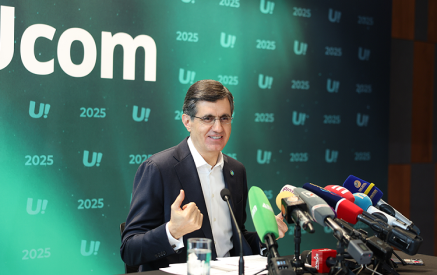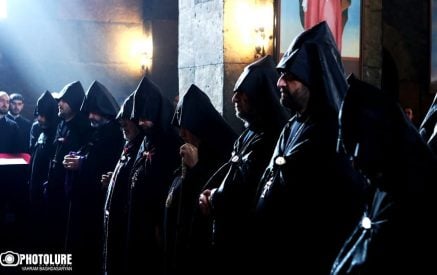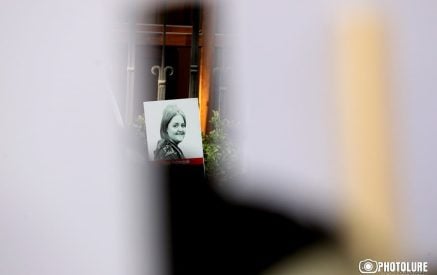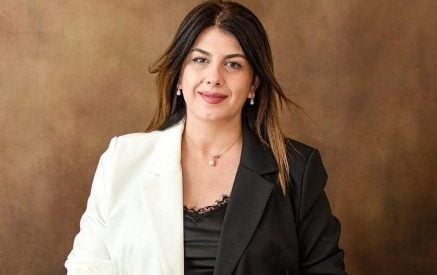The painter born without arms against nuclear arms
“All this has actually happened, my parents have seen all this and told me.” Karipbek Kuyukov’s these words do not come out of my head for more than two months. The infinite willpower buried in this small man born without arms regularly makes me return to the interview with him which I could not put down on the paper during all this time. It is hard to write as the words are too many but it is possible to summarize it in one sentence: “Free the world from the nuclear threat.”
Karipbek Kuyukov was born in 1968 in Semipalatinski region, Kazakhstan. His parents were the witnesses of multiple nuclear tests in this area. As a result of their exposure to radiation, Karipbek was born without hands. Physical problems were not limited to it but he has found the strength not to give up but also to turn his life into a fight against nuclear proliferation and nuclear testing. The 48-year-old K. Kuyukov is an artist. He holds the brush with his mouth or feet. His paintings attract attention from distance with their perfect color sense but when you come closer and see what he has painted…
On August 29, 2016, “World without nuclear weapons” forum was held in the capital of Kazakhstan, Astana. The building where the delegates from more than 50 countries were gathered to say “No” to the nuclear weapons and to discuss options to free the world from this catastrophic disaster was hosting Karipbek Kuyukov’s exhibition of works. He had depicted the horrors he had seen, imagined and heard. In Semipalatinsk region, in Soviet times, 456 nuclear tests were conducted within 50 years which to some extent affected more than half a million people one of which is Karipbek Kuyukov. 25 years ago, Kazakhstan decided not only to stop the nuclear testing, not only to shut down the military experimental field considered to be the biggest in the world but also to reject the nuclear legacy left from the USSR which ranked the fourth by its potential of nuclear power in the world and to eliminate this “wealth”.
It was preceded by the movement of “Nevada-Semipalatinsk” initiated by Kazakh intellectuals (headed by writer Olzhas Suleimenov) which had a decisive role in the position of Kazakh authorities. Karipbek Kuyukov is the honorary ambassador for the “Atom” international project created in 2012. The project pursues one goal: to raise 1 million petitions from people living in different parts of the world who say their decisive “No” to the arms race. Every year, billions of dollars are spent on creating much more powerful and similarly horrible weapons. The “Atom” project intends to influence by this petition on nuclear superstates and country leaders which so far have not ratified the Comprehensive Nuclear Test Ban Treaty.
The Treaty was adopted in 1996 in the framework of the United Nations but as long as eight specific nuclear countries: Egypt, India, Israel, Iran, China, the DPRK, Pakistan and the United States have not signed and ratified it, the Treaty cannot enter into force. Kuyukov told “Aravot” that his parents have seen those huge bright “mushrooms” with their own eyes which were arising as a result of the nuclear test. And he remembers how everything in the house was shaking: the rattling of dishes and cupboards when the next test was carried out. When Karipbek was born without arms, his parents suffered a lot, his father took him to Leningrad. There was an institute where arms for prosthetics are made, hoping that they will prepare arms for his son. The son ended up studying in Leningrad and ultimately received the diploma but never got used to the prosthetic arms.
He loved to draw since early childhood, the world of colors was something incomparable for him. “I have been to many countries where people have suffered from living under the shadow of nuclear tests. I have seen the tears falling from the eyes of mothers from Hiroshima and Nagasaki. I have participated in meetings and protests at the Nevada test site in the United States. I have worked with many friends, one (limited by) the consequences of the Chernobyl disaster. I have seen sick mothers, and children — hidden by mothers uncomfortable with showing their children to other people. I have seen the effects of the great calamities that have damaged our planet. My main mission on this land is to do everything I can for people like me to be the last victims of nuclear tests. I will continue to call on all the mankind to preserve security on the planet until my heart stops,” these words by Karipbek Kuyukov found their place in the official website of the “Atom” Project where he calls all the humanity not to wait for the goodwill gesture by their own countries but to fight against nuclear testing and nuclear weapons.
As for the nuclear energy for peaceful purposes, not everything is so clear here. The nuclear energy production is an irreplaceable alternative to the energy production with natural fuel that has already consumed its supplies in the world. On the way to obtaining energy through nuclear fuel, according to the scientists, comparatively less damage is caused to nature and the climate than from receiving energy from fossil fuels: oil, gas, and coal when the much bigger amount of carbon dioxide is produced. In addition, the prime cost of nuclear energy is much lower than the prime cost of energy produced by other options. However, one mistake or natural disaster in the way of receiving nuclear fuel can cause not only an irreversible damage to the environment but also be a threat to the lives of tens of thousands of people. The issue of the correct and safe operation of nuclear power generating plants requires very delicate and expensive solutions.
Seismic Armenia that has no fuel resources is surrounded by unfriendly countries, it is one of 31 countries in the world that produces nuclear energy. Although it seems inevitable as long as no steps are taken towards obtaining alternative wind and solar energy. After the reoperation, the plant is constantly under control, strict radiological control of the surrounding area is carried out, the level of security of the plant is raised, the plant is working in a stable and secure mode not allowing Armenia to appear in an energy crisis.
Melania BARSEGHYAN

































































